#BinanceAlphaAlert #Write2Earn #Web3 Trend and Correction in the market.
I have already told you a bit about movements in the market in the previous article about market cycles, so let's delve a little deeper into this topic, my friends. What will be discussed next is literally fundamental in the cryptocurrency market and beyond. We will analyze concepts such as 'trend' and 'correction', in simpler terms, the topic of trending movements in the market. Without understanding these movements, you will be draining your deposits time and again, so I advise you to focus and take a little journey into your mind.
The first thing to learn is to identify the trend.
Trend is a key concept for any trader, the foundation of foundations. When you look at the chart, you must clearly understand what is happening there and what the market's priority is at the moment. There are three types of movements:
upward trending,
downward trending,
sideways.
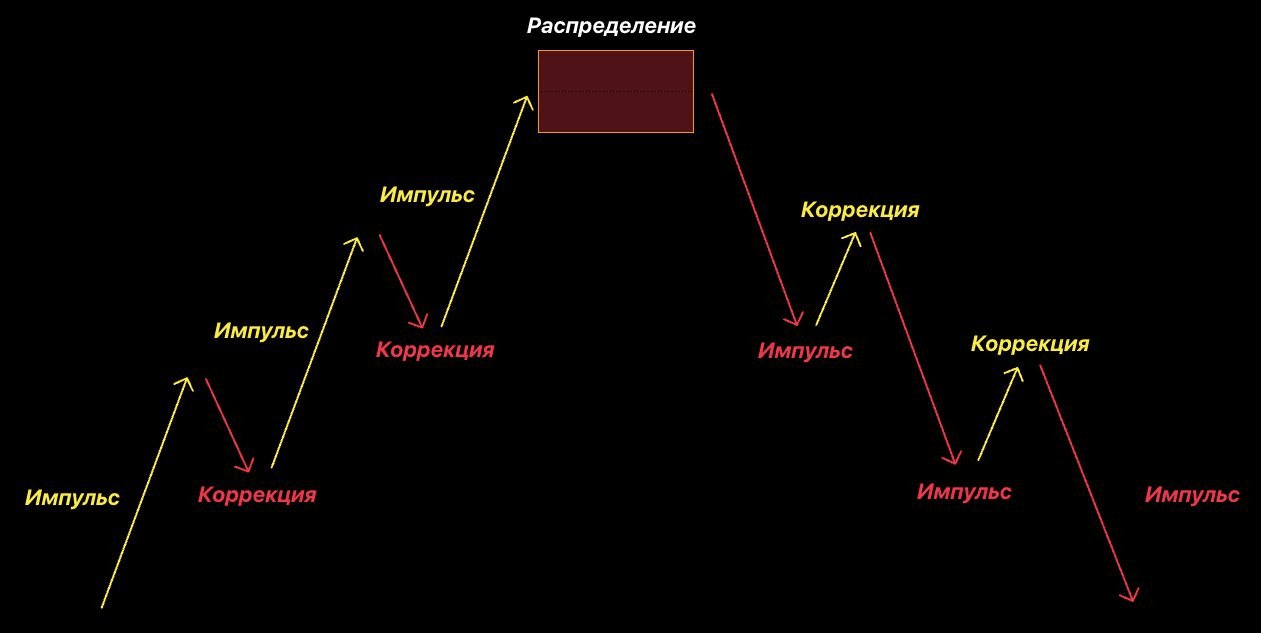
Returning to the topic of market cycles, let me clarify:
An upward trend movement is a movement upward: from the accumulation phase to the distribution phase (upward trend).
A downward trend movement is a movement downward: from the distribution phase to the accumulation phase (downward trend).
Each of you has seen this on the chart. But the trend does not move in one direction without stopping. The essence of the market is that any movement in the trend is accompanied by a correction — the market maintains balance. To avoid confusing correction with the trend itself, it is necessary to understand what impulses and corrections are — the structural parts of any trend.

Impulse movement is movement in the direction of the trend.
Corrective movement is movement against the trend.
Important: the market is fractal. This means that globally we may be in an upward trend (impulse), while locally we are in a downward correction.
Remember, the market is always in motion, and, naturally, for both impulses and corrections, there are quite explainable reasons for their existence.
During an impulse, rising prices lead to an increase in demand for a particular asset, which can, in turn, strengthen the trend. A correction during this movement allows for purchasing the asset at a more favorable price, giving those who missed the first impulse a chance to enter. These purchases during the pullback provoke a rise in prices in the direction of the existing trend. There are countless examples of this on the chart: impulse — then a small pullback (correction) and again an impulse.
As for corrections — the logic, you could say, is the opposite. When an asset is rising, prices become too high for purchases, and the number of buyers at high prices decreases. A similar situation occurs with falling prices, as the number of sellers at lower prices diminishes. Alternatively, at a certain point, some market participants may decide to close part of their positions to take profits, resulting in a corrective movement.
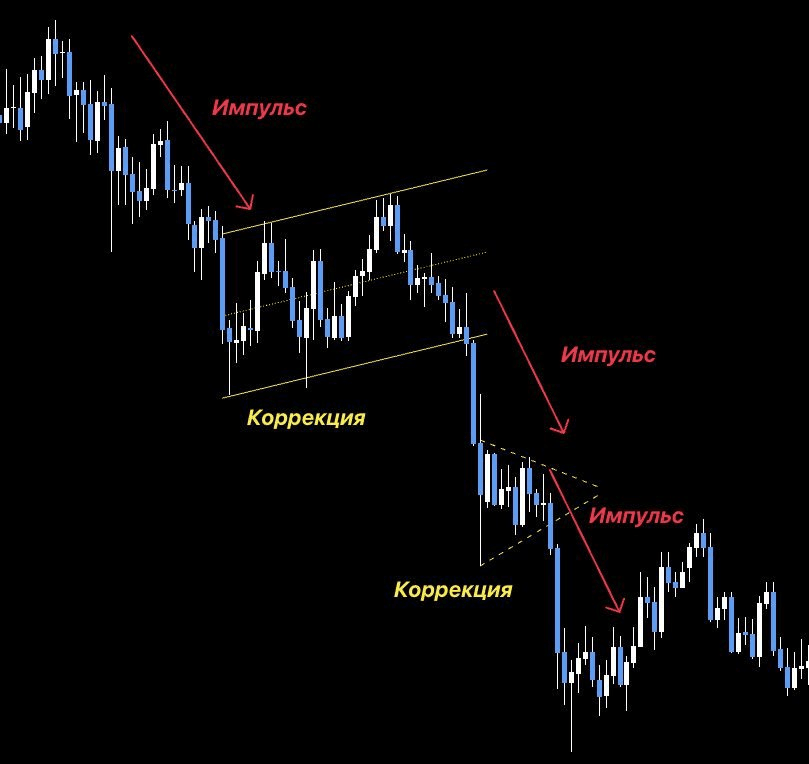
So, shedding some light on the psychological component of the market will make it easier for you to perceive the following. Now I will tell you how to identify such movements on the chart, and perhaps this is the most important part, so you need to focus all your attention here. As I said — on the chart, we can see only three movements: upward, downward, sideways. Remember this.
Impulses and corrections form on the chart maximums and minimums, which, in turn, help us understand which direction the market is moving. In other words, what trend we currently have: upward, downward or sideways.
Technically, it’s very simple: if we see that each time the maximum and minimum are higher than the previous ones — we have an upward trend.
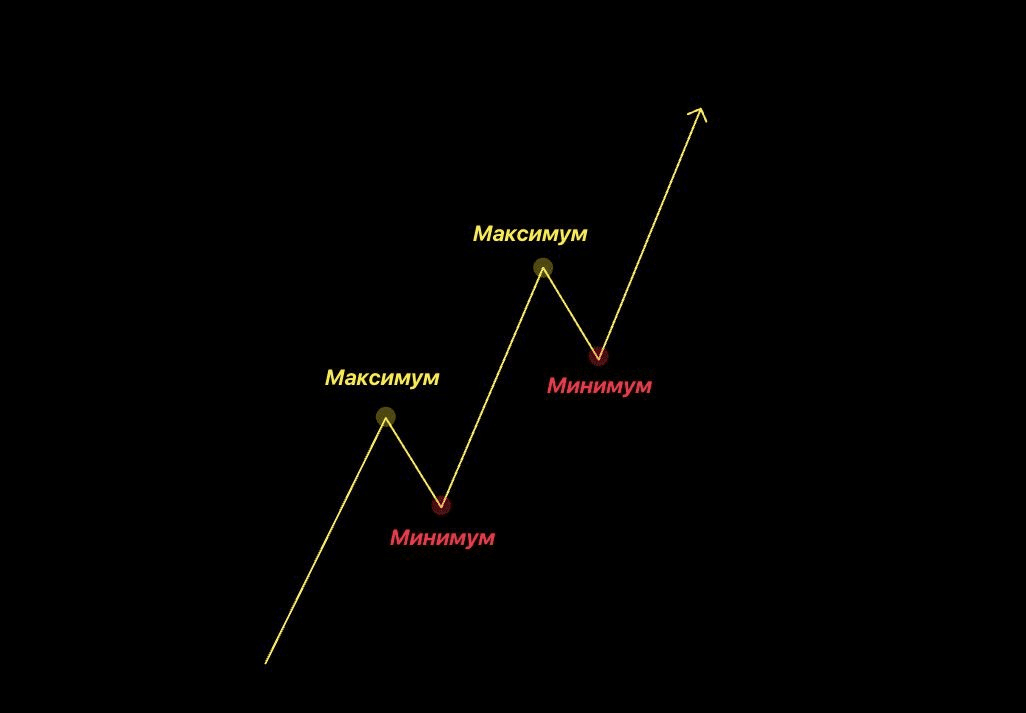
If each maximum and minimum is lower than the previous one — we have a downward trend.
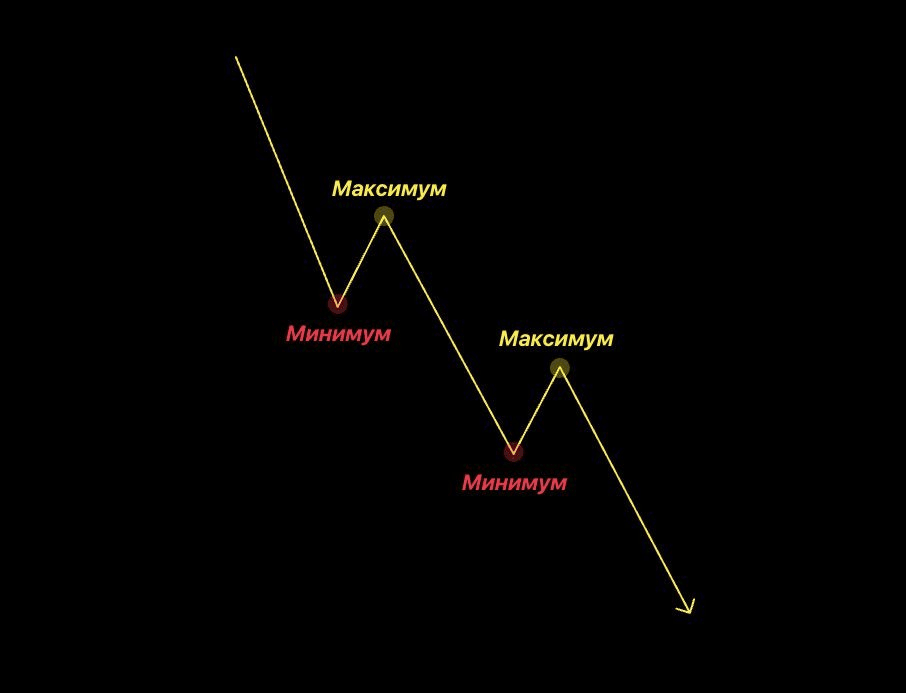
If the maximums and minimums are approximately level with the previous ones — we have a sideways movement.
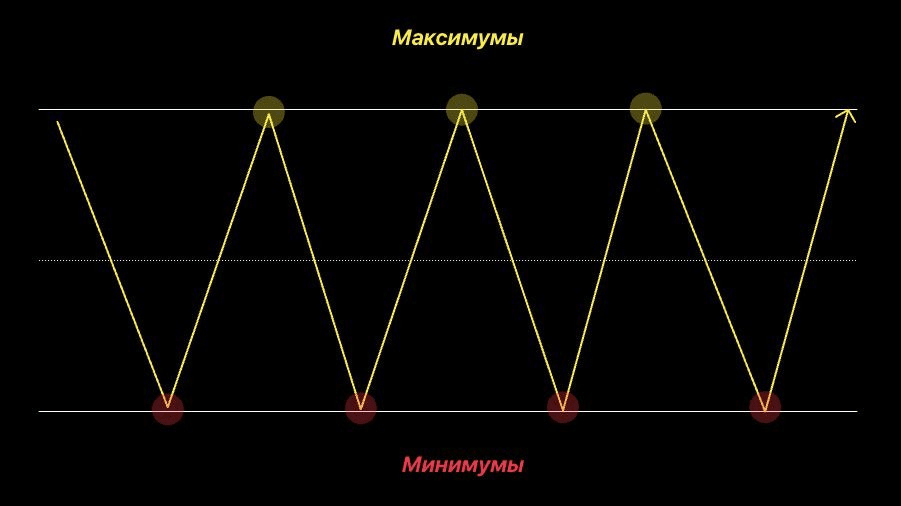
All these movements form the market structure, and as long as the structure exists — the trend continues, and we sail in its direction, taking profits along the way.
Remember: most lose money because they fight against the trend. The minority earns because they use its strength. We do not swim against the river — we use its current to get to places that others are not even allowed to peek at.
